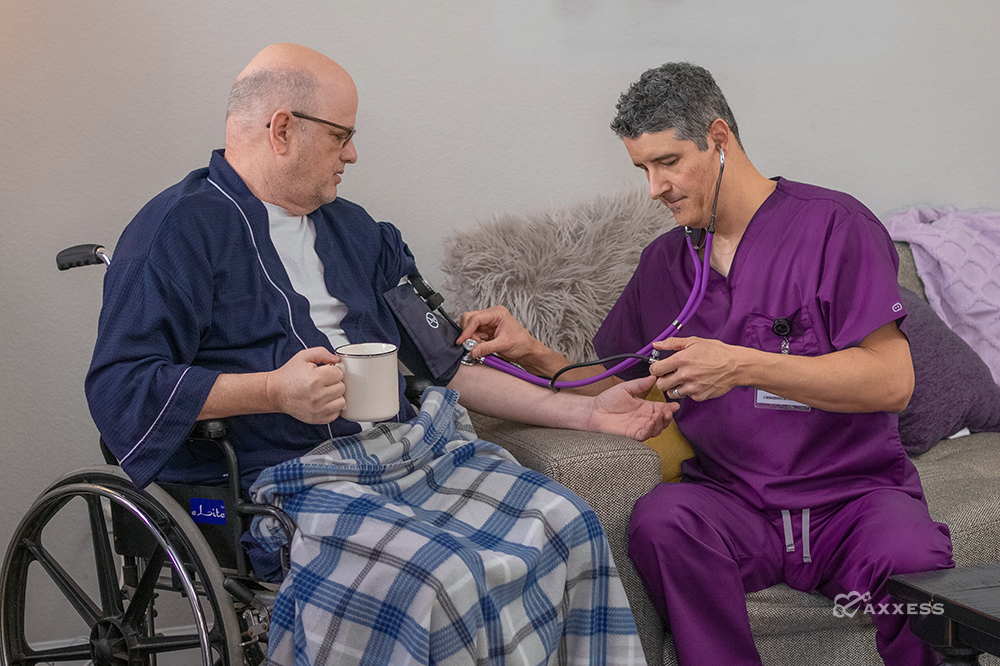
The Medicare Administrative Contractors (MACs) Palmetto, Cigna Government Services (CGS) and National Government Services (NGS) set disease-specific criteria for eligibility for cardiac disease that include assessing the non-disease specific criteria alongside the disease-specific criteria. As with all diagnoses for hospice patients, the eligibility is determined by the physician’s narrative statement in the Certification of Terminal Illness (CTI) of the specific reasons (including these local coverage determination (LCD) criteria) that the patient has a prognosis of six months or less if the disease runs its expected course.
The MACs group all end-stage cardiac conditions together (and Palmetto includes all cardiac diseases in the same LCD as pulmonary). There is no mention of any specific cardiac disease in the LCDs. However, the New York Heart Association (NYHA) staging does specifically mention it is used to measure the extent of heart failure, which can be a result of many end-stage heart conditions. Due to the long progression of cardiac disease, it can be challenging to determine when a patient has entered the terminal stage and reviewing the LCDs for this disease group can assist agencies with documenting appropriately in the hospice software to reduce the risk of not passing an Additional Development Request (ADR).
Criteria for End-Stage Cardiac Disease Eligibility
Both CGS and NGS set the same criteria for eligibility to determine the terminal stage of cardiac disease. One important criterion is that the patient has end-stage cardiac disease symptoms while being optimally treated for heart disease and/or declines or is unable to have surgical procedures to correct the cardiac disease. If a patient is referred to hospice who is highly symptomatic of end-stage cardiac disease but has not received appropriate medical management, the patient may not yet be at the terminal stage. Additionally, the patient should have NYHA class IV disease, which precludes patients from being able to carry on any physical activity without chest discomfort and shortness of breath. These symptoms may also be present at rest. Congestive heart failure with a documented ejection fraction of ≤20% is helpful but not required to obtain a new one if it is not available.
Additional supportive documentation that is helpful but not required includes:
- Treatment-resistant symptomatic supraventricular or ventricular arrhythmias;
- History of cardiac arrest or resuscitation;
- History of unexplained syncope;
- Brain embolism of cardiac origin;
- Concomitant HIV disease.
Comorbidities and Secondary Conditions Can Help Eligibility
Palmetto takes a less specific and more structural and functional view of determining end-stage cardiac diseases. They also state that identifying and documenting environmental factors and activity limitations in the hospice software, along with how comorbidities and secondary conditions are impacting prognosis, will bolster the eligibility claim for agencies. Secondary conditions are directly caused by the terminal diagnosis, while comorbidities are separate conditions that may impact prognosis but are not directly caused by the terminal disease. An example of a secondary condition in a patient with cardiac disease would be delirium, pneumonia, and skin breakdown caused by poor oxygen perfusion to the skin. Comorbidity for a patient with cardiac disease would include end-stage renal disease (ESRD) or diabetes mellitus (DM).
All MACs expect the hospice to determine the diagnoses that are related to the patient’s terminal prognosis and address them in the CTI narrative to accurately paint the picture of the reasons the physician believes the patient has a prognosis of six months or less. Furthermore, correctly identifying and assessing the patient’s full diagnoses will assist agencies with developing the most appropriate and proactive plan of care for addressing the patient’s needs during the hospice admission.
